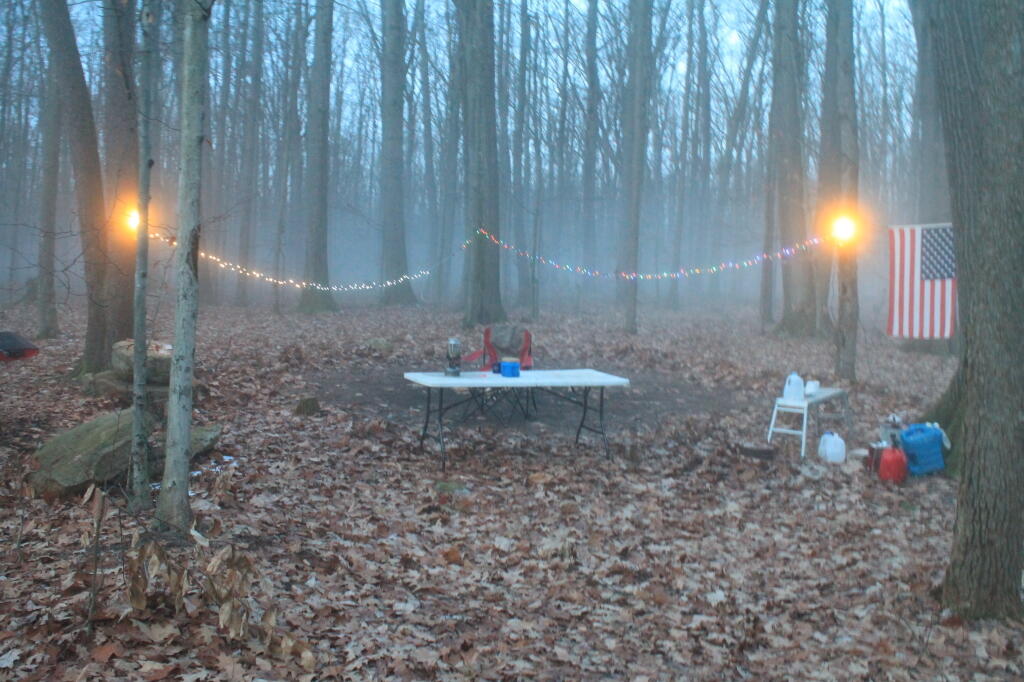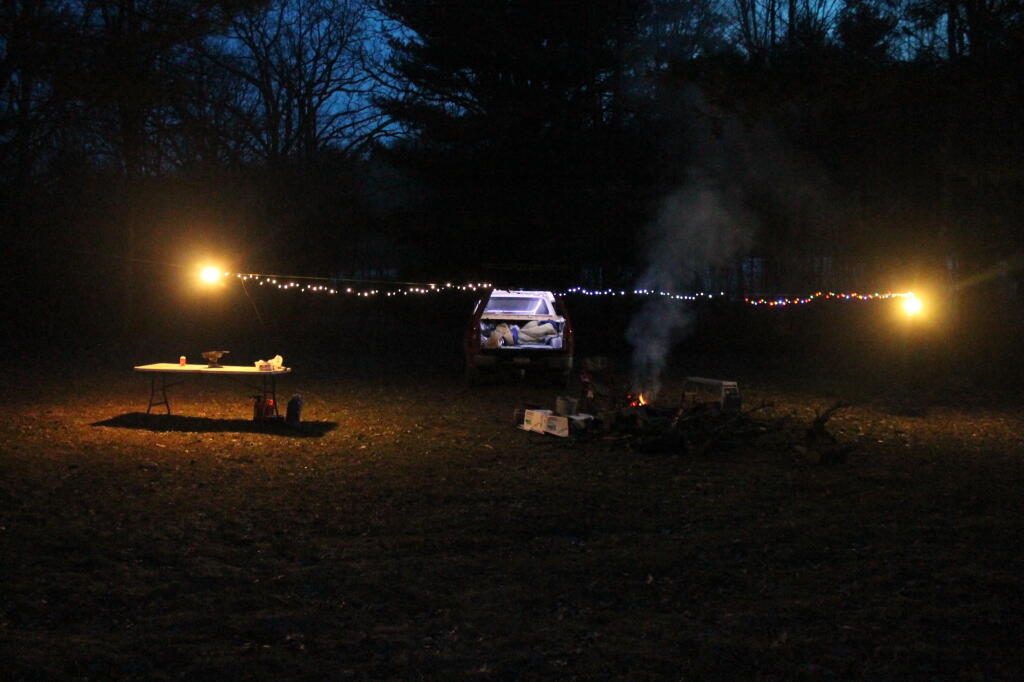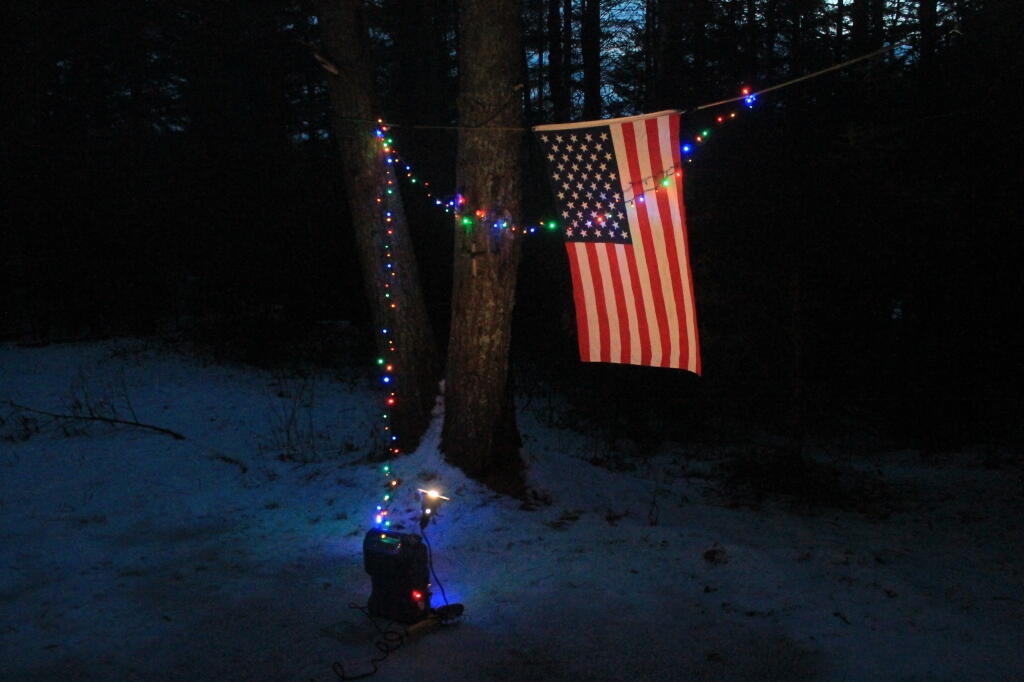Replacing All My Camp Lighting Next Year with LEDs
Right now, my primary source of camp lighting is a set of two 100-watt equivalent florescent bulbs, hooked to my truck’s inverter. Due to the nature of camping, and because things often get wet or dropped, they really do not last very long, and frequently need replacing.
When they don’t get broken, I usually bring them home, and save them to the some day in the future when I return them for recycling. When they break — I don’t freak out — I usually just chuck them in the campfire, and pack out the glass and unburnt debris in the morning. I don’t really freak out about the mercury. But for environmental reasons, I would like to get away from mercury-based lighting, despite the relatively tiny amount of mercury in each bulb.
In recent years, I’ve been slow moving away florescent lighting whenever I can for camping. An early purchase of mine was LED Christmas light strings. The purpose of the Christmas lights was not so much for decoration — even though they’re pretty — but to provide a small amount of backlight to the campsite, so I don’t trip on things. A string of LED Christmas lights uses a fraction of the energy, even a smallish compact florescent uses.
This past year, I noticed that LED light bulbs have finally come down enough in price to reasonably affordable. I bought my first one this past July, a 40-watt equivalent bulb that uses only 7-watts of electricity, for a bright warm white lighting of my American flag. It not only seems quite durable and efficient, it always bright regardless of the temperature. It keeps the flag lit regardless of the weather.
With prices coming down even further, I bought a second LED bulb this fall for $10. It’s a 60-watt equivalent that uses only 10 watts of electricity. Best of all, even during the cold winter months, it works quite well. I wasn’t crazy about the heat shielding on the model I bought, but many of the newer ones lack the ugly heat shielding over the glass. Despite 15 degree temperatures, the 10 watt LED bulb kept things bright all night long.
LED lighting is the future. Fluorescent lighting not only contains mercury, it also uses more power and dims dramatically even under modest temperature drops. Florescent lighting is fine indoors, in relatively warm rooms. But it doesn’t work well outside, especially when camping, when air temperatures can 50 degrees or even lower in the even lower. Common fluorescent lamps dim in the cold, while LEDs shine their brightness, regardless of the cold.
Two years ago, when I bought my truck cap, I bought a series of LED strip lights to light up the cap. At the time, I had the choice between warm-color LEDs and cool-color LEDs. I bought the cool colored ones, as I thought they would look more neat in the truck cap. I’ve been thoroughly impressed with them since purchasing, and would consider having them as part of a future off-the-grid home.
What’s nice about LEDs is they are natively 12-volts, so they work well with batteries, solar-panels, and most renewable sources of energy. The onces I bought for my truck, required no transformer or adapter, as they worked on natively at that voltage. It’s also relatively easy to step down 120 volt AC power and run it through a diode to create 12 volts DC to run LED lamps. Most LED lights are natively dimmable with common thysor-based dimmers and require no ballast.
A decade ago, I toured an off-the-grid house in Clinton County. It was a neat home, and one of it’s best features was the use of 12-volt wiring for lighting. Rather then step up the voltage from the solar panels and batteries for lighting purposes, they chose to efficiently just use 12-volt DC lamps, mainly the relatively new LED bulbs and some halogens. They also had a large inverter to power 120-volt AC appliances and select number of florescent light bulbs.
I think LEDs are the future. I am sure after spending $10 a bulb to buy a third or fourth camp light, prices will come down even further, and I will look back and think what a waste of money.





